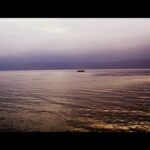

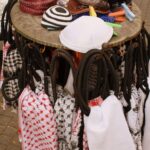
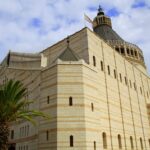
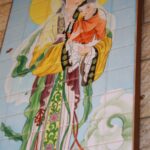

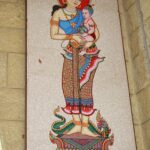
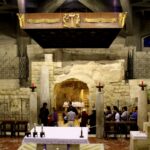
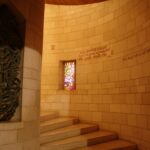
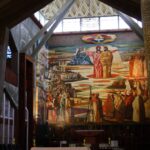
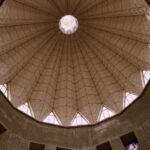

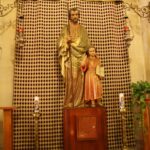

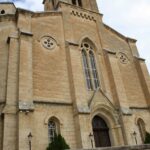


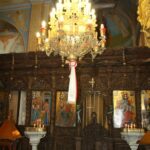
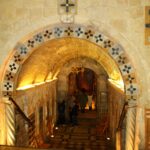
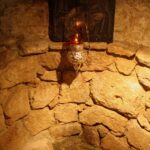

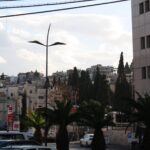
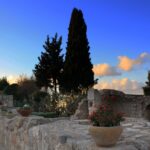
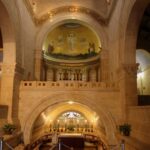
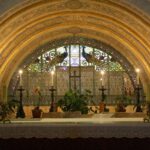
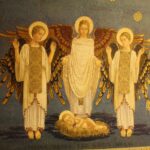
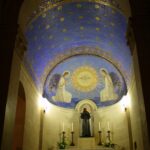
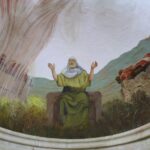
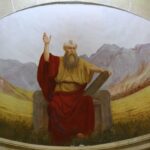
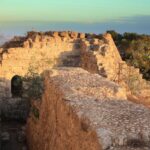
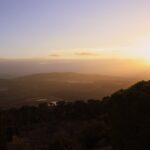
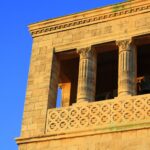
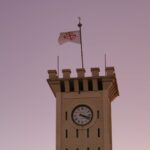
Jerking our way through the roundabout — the rotary if you will — I apologized for imposing whiplash on Tallulah and my Sweet Lady. “Didn’t know what that guy coming in from the right was up to, and these brakes are a little grabby.” You’d think that, what with all these nice highways to travel, Israeli rental cars would have a little more give in the brakes. Highways will only get you so far, of course, and we turned off at Cana for the trip up to Nazareth.
Cana is, as you recall, the site of Jesus’ first miracle: turning water into wine. I can turn a can of Copenhagen into something that looks like a bottle of ice tea, but water into wine is the real deal. Most people don’t know this, but just as there are two kinds of sins (e.g. omission and commission) there are two kids of miracles (ibid.) Jesus’ first miracle at Cana was of the commission sort. It was a miracle because of what happened. Driving through Cana today, as an elderly sort of lady darted out in her Passat wagon, our grabby breaks performed the Second Miracle at Cana: we did not hit her. A miracle of omission.
A similar miracle was witnessed just minutes later in Nazareth as we pulled a Uey on Paulus VI street. Apparently, looking directly ahead is not mandatory for driving in Israel as the woman who approached from the side street failed to do so. Nevertheless, her grabby brakes did the trick, but my hands were still shaking when I wrenched them from the wheel in the parking lot several minutes later. Fortunately we could walk to the Basilica of the Annunciation from the lot.
The Basilica is built over a grotto (read: cave) where tradition holds that Mary lived as a young woman and where Roman Catholics say she was visited by the Archangel Gabriel who told her that she was with child. It seems weird that these churches are built right on top of these sites, until you see all of the people who show up at the sites. Some of them start having church right there too, so that could get hard on a grotto. Plus we just like to build us some crap and there ain’t no place like a historical place ’cause a historical place don’t stop. Having visitors.
Anyway, the Basilica of the Annunciation is big. The Church of St. Joseph is not tiny, but it is nowhere near the size of Mary’s place. I have always thought Joseph kind of gets short shrift because he totally did not have to do what he did and everyone made fun of him for doing it. His church should get something close to equal square footage. It is, conveniently, right next to Mary’s place probably because ancient tour guides, who got paid by the site, would say, “Hey, look! Mary’s house! And wow! there’s Joseph’s house! 8 shekels please.”
But ok, as we discoved yesterday, things tend to be kind of packed in together in the ancient world. This was probably even more true in a hill town where only so many places could be occupied. To this day, folks in Nazareth seem to be packed in on top of each other. Things tend to the functional as opposed to the laid back scene going on down at the lake. You can see why Jesus and his pals might want to get away. A camping trip to Mt. Tabor seems like just the thing, and if two prophets want to tag along, so be it.
I’m not saying that Peter, James, and John did not see what they thought they saw up on the mountain, but I do know that by the time they got up there everyone would have been in a pretty good lather. With the sun at the right angle, glinting off a sweaty brow, it would be easy to describe a person as “glowing.” Also, there are a ton of twists and turns in that road and motion sickness can give you all sorts of vision.
Whatever the case, the Church of the Transfiguration is a pretty spectacular place up on top of that mountain. The rich sand colored stone on the exterior leads one into the nave of marble and down a flight of steps to an altar set above the stones where Jesus, Moses, and Elijah are believed to have stood. Behind the altar is a glorious peacock window and above it is a barrel vaulted ceiling with elegant mosaics. As difficult as it must have been to get the materials to that site, the labor was not in vain.
Descending from the mountain top is almost always a drag, but one never knows what to expect in Israel. On this descent, we encountered a horse and rider. And why not? For some reason, we were directed to the main road in a different way than we came, and it turned out to be an easier route home. The now familiar streets of Tiberias and face of the falafel man greeted us at the end of a day full of miracles in both forms. Just like any other day.